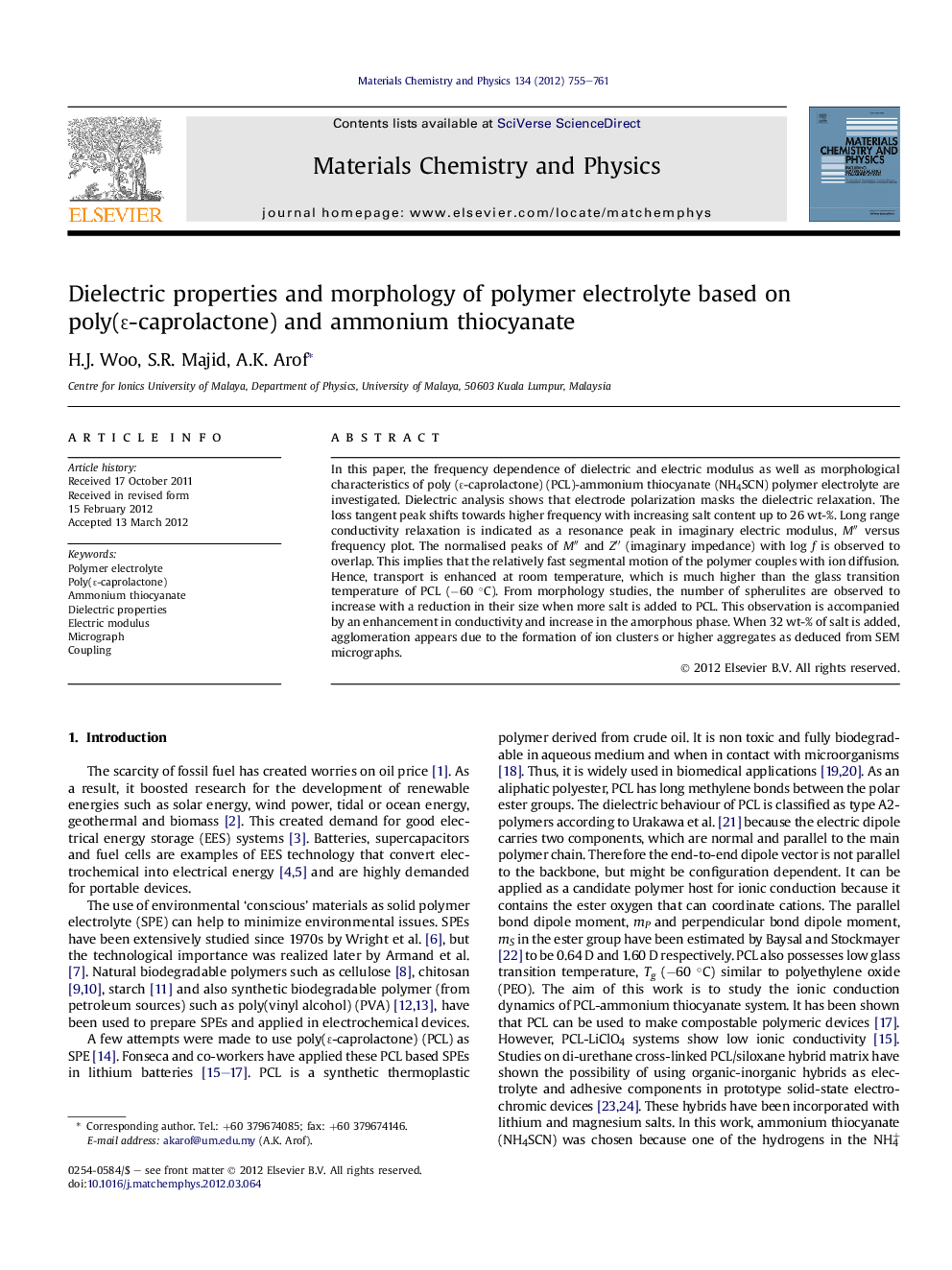| کد مقاله | کد نشریه | سال انتشار | مقاله انگلیسی | نسخه تمام متن |
|---|---|---|---|---|
| 1522986 | 1511826 | 2012 | 7 صفحه PDF | دانلود رایگان |

In this paper, the frequency dependence of dielectric and electric modulus as well as morphological characteristics of poly (ɛ-caprolactone) (PCL)-ammonium thiocyanate (NH4SCN) polymer electrolyte are investigated. Dielectric analysis shows that electrode polarization masks the dielectric relaxation. The loss tangent peak shifts towards higher frequency with increasing salt content up to 26 wt-%. Long range conductivity relaxation is indicated as a resonance peak in imaginary electric modulus, M″ versus frequency plot. The normalised peaks of M″ and Z″ (imaginary impedance) with log f is observed to overlap. This implies that the relatively fast segmental motion of the polymer couples with ion diffusion. Hence, transport is enhanced at room temperature, which is much higher than the glass transition temperature of PCL (−60 °C). From morphology studies, the number of spherulites are observed to increase with a reduction in their size when more salt is added to PCL. This observation is accompanied by an enhancement in conductivity and increase in the amorphous phase. When 32 wt-% of salt is added, agglomeration appears due to the formation of ion clusters or higher aggregates as deduced from SEM micrographs.
► Loss tangent peak shifts towards the higher frequency with increasing salt content.
► Normalised peak of imaginary electric modulus coincides with imaginary impedance.
► Coupling of fast segmental motion and diffusion of ions is observed.
► Crystallinity of PCL reduces with salt content as the spherulite reduces their size.
Journal: Materials Chemistry and Physics - Volume 134, Issues 2–3, 15 June 2012, Pages 755–761